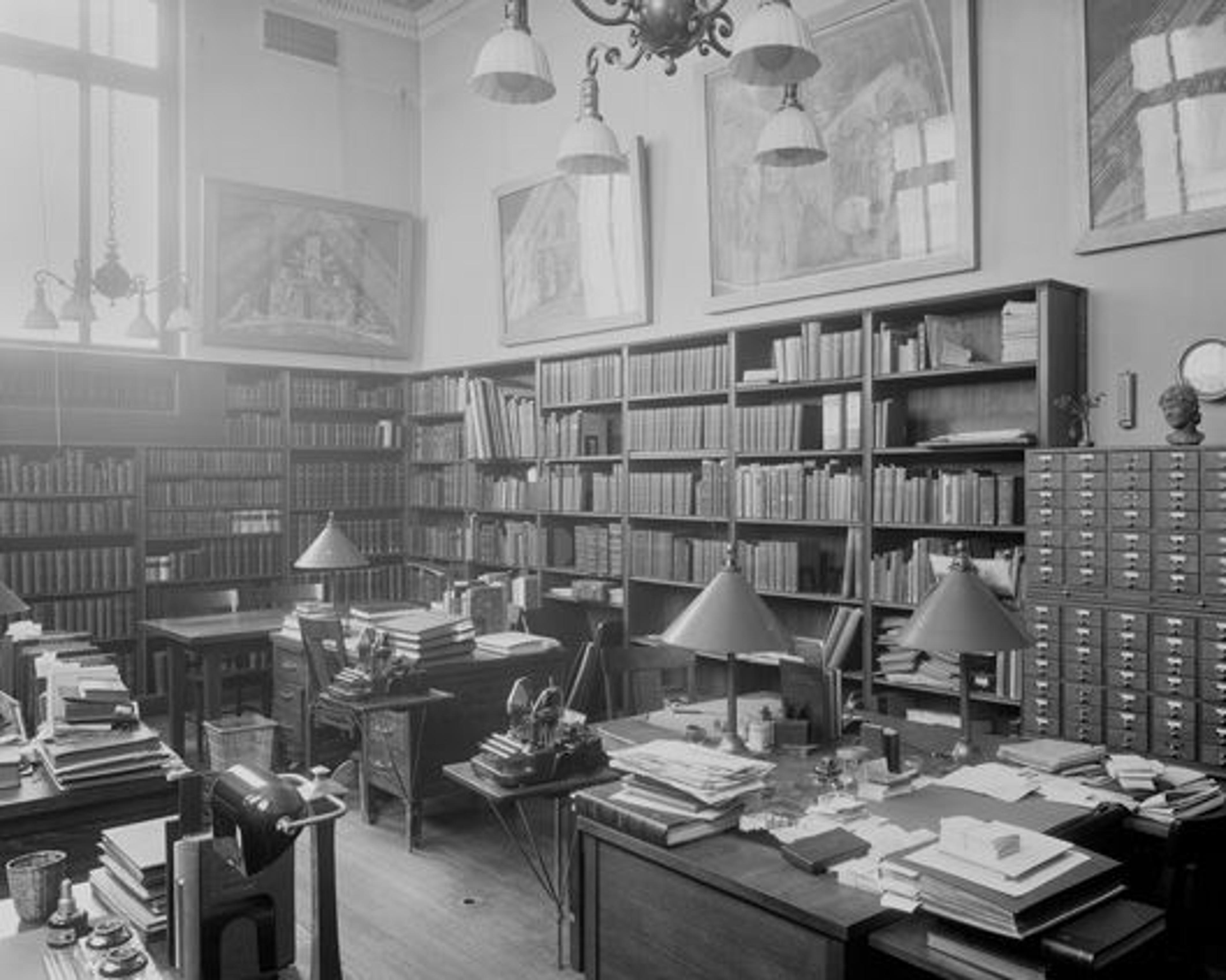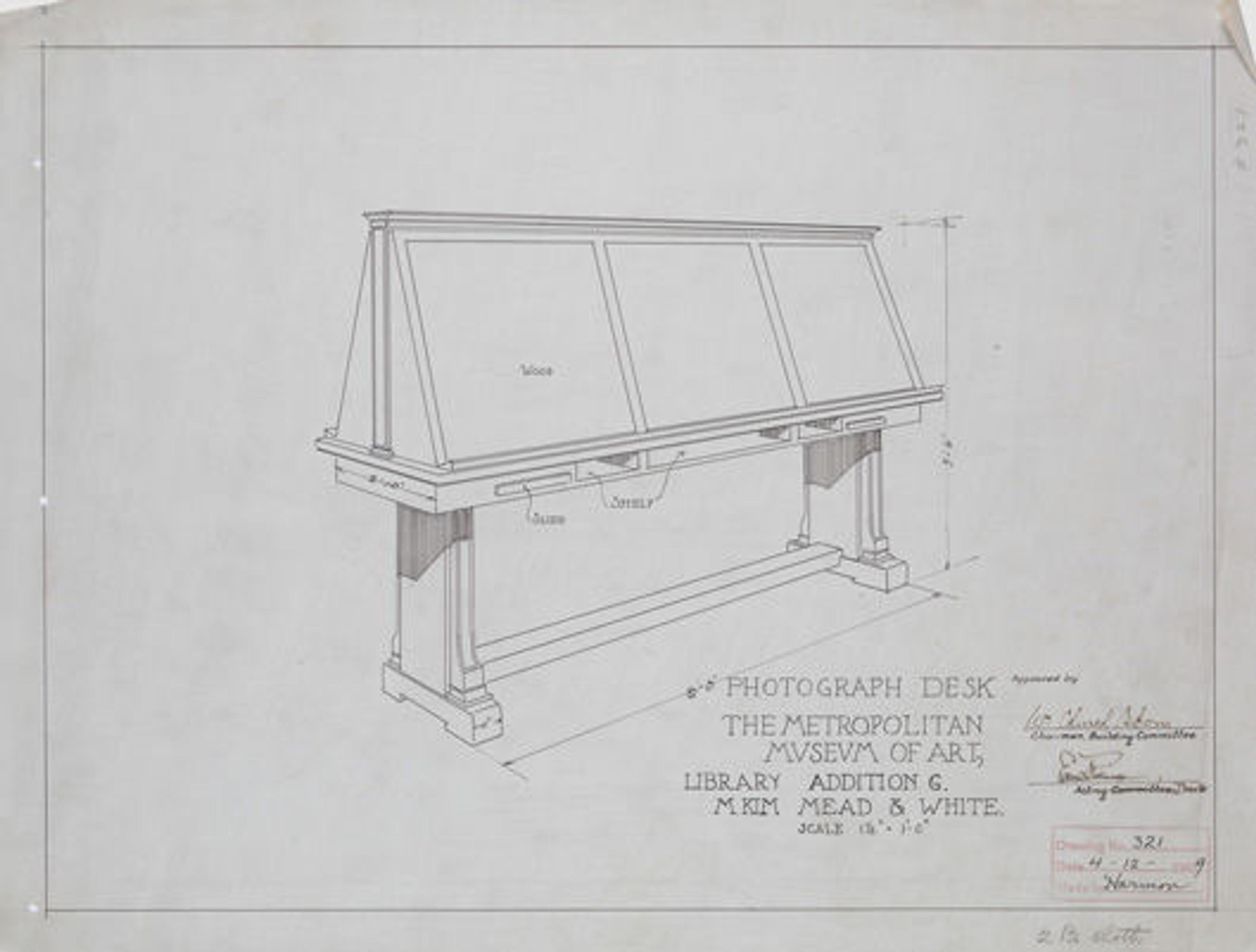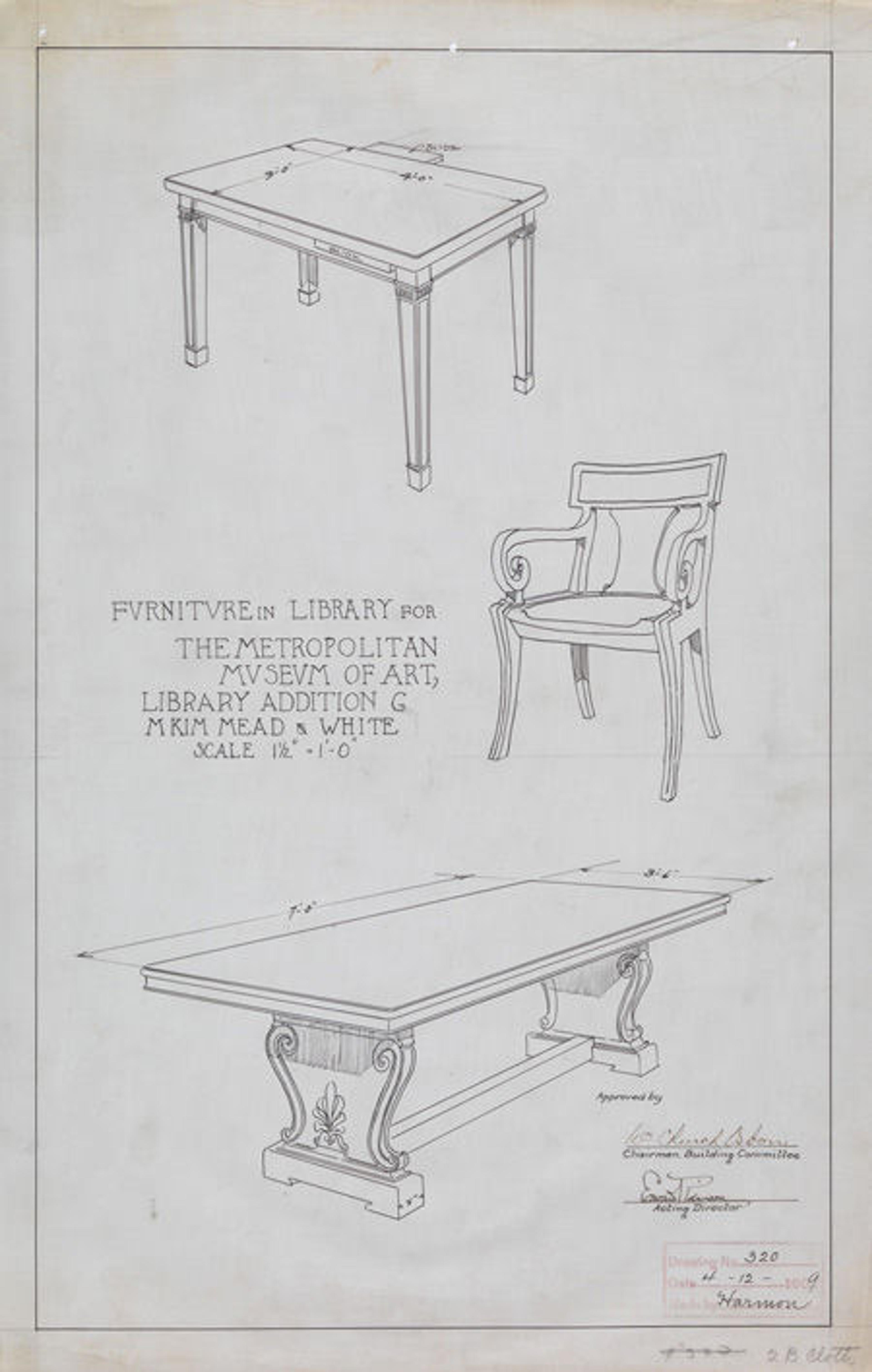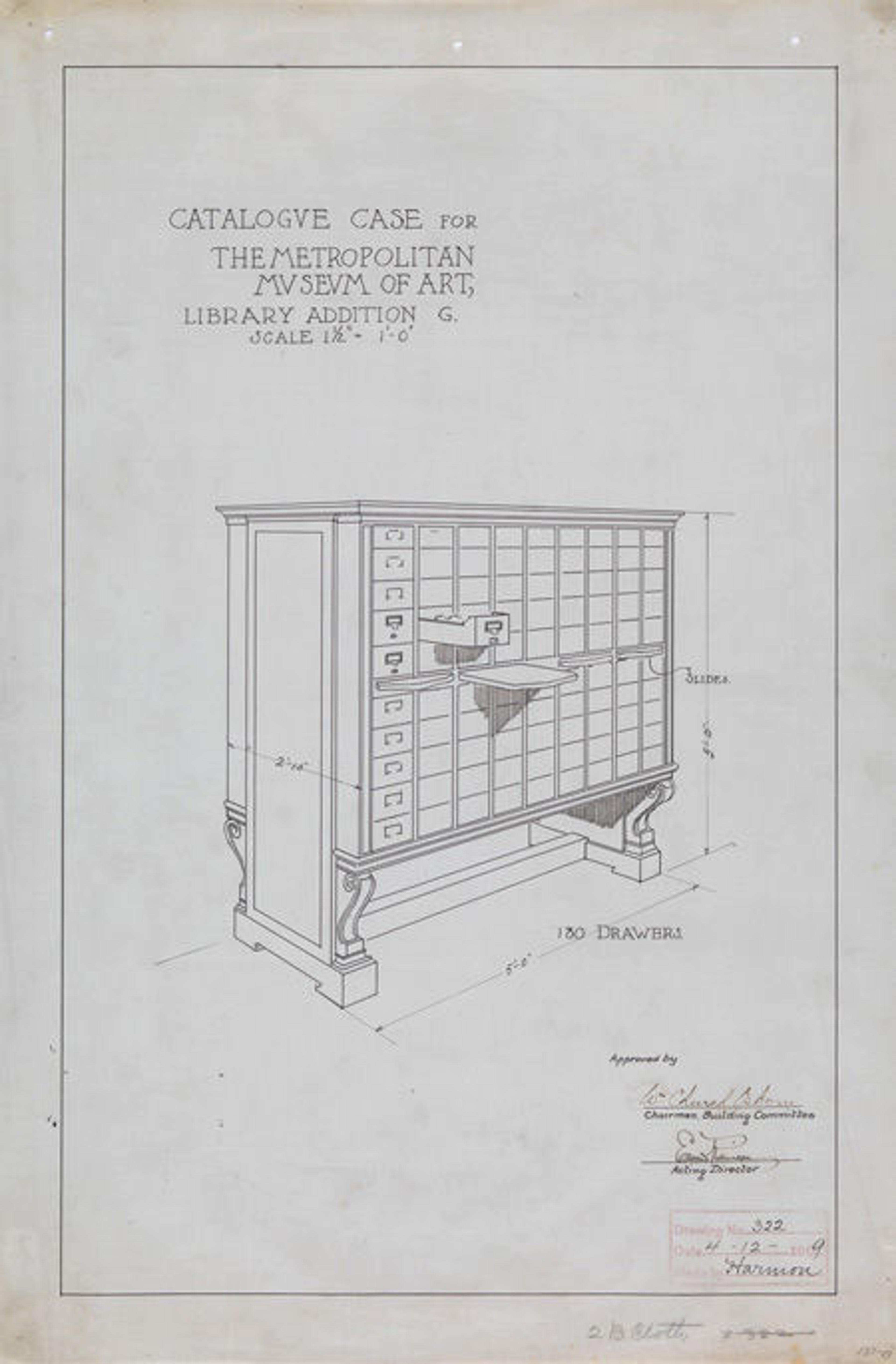
The new reading room, 1910
«One hundred years ago today, The Metropolitan Museum of Art opened the doors of its library's new home to art historians, students, and the general public.»
The Museum's founders understood the essential role of a library in fulfilling the institution's mission. In fact, the original 1870 New York State charter specifically committed the new institution to "establishing and maintaining . . . a Museum and library of art." (See "Today in Met History: April 13" for more about the Museum's charter.) The library was formally established in 1880, and today it shares the Museum's distinction of being among the world's greatest treasuries for the study of the arts of many cultures.
At the time it was established, the library's collection contained 196 books and pamphlets, which were deposited in a small, dark room in the basement of the Museum's first city-built structure in Central Park. Water seeped through the crevices of the building's rock foundation, and the lurking humidity was not ideal for either books or human beings. The collection was rapidly expanding and would soon outgrow this first location. In 1881 the Heber R. Bishop endowment fund in the amount of $2,000 was established for the library; in 1883 it was increased to $5,000. Gifts and donations came in from numerous donors and trustees, notably several hundred books presented by John Bigelow in 1885, some five hundred volumes from the library of Edward C. Moore in 1892, and generous donations from founding Trustee Samuel Putnam Avery throughout his lifetime. In 1901 the Museum received a large bequest from Jacob S. Rogers, of which a portion was to be used for the purchase of library books.
In 1888, during this period of rapid growth, the library was assigned a room on the second floor of a newly erected southern extension of the Museum. It included shelf room for an estimated ten thousand volumes, and reading tables that could accommodate up to a dozen people. For twenty-two years, this room was a comfortable place that met all the library's needs. The time came, however, when the collection outgrew this room as well as the adjoining Board Room; more space was a necessity.
Over the next decade, a new Italian Renaissance–style library designed by McKim, Mead and White was built, and on July 19, 1910, it opened to the public with a collection that contained more than nineteen thousand volumes, two hundred and ten journals and magazines in English, French, German, Danish, Hungarian, Spanish, Italian, Greek, and Syrian, a photo study collection, illuminated manuscripts, and other unique offerings.

One of the eight alcoves in the Museum's new Library, 1910
The new design included a spacious (more than 3,000 square feet) reading room on the main floor that was well ventilated and lighted by clearstory leaded-glass windows at the sides and ends. It contained ten alcoves for books, each of which featured one section of roller shelves for large volumes. Eight of the alcoves were furnished with small tables and two chairs for the use of Museum staff or students with special access. Other readers were accommodated at tables placed in the center of the room. Two large, electric chandeliers suspended from the ceiling provided ample light, and each reading table was furnished with lamps. In the alcoves, rows of lights directly beneath the floor of the gallery illuminated the shelves, and electric lights were suspended over each table.

McKim, Mead and White design for the new photograph study desk, 1910. See more design images.
In a large space underneath the reading room, metal stacks provided shelving for another twenty thousand volumes that could not be kept in the main room or gallery. A special room for the collection of photographs was furnished with storage cases and reference and viewing tables including one large, upright double desk, shaped like a lectern, on which photographs could be placed at an angle and studied closely. The collection of photographs, which numbered more than twenty-eight thousand, covered ancient and modern art, both fine and industrial. The new library could accommodate up to fifty thousand photographs for study and storage.

Photograph Reference Room, 1914
In 1962, the McKim, Mead and White structure once again needed an update, and it was replaced on the same site with a new facility designed by Brown, Lawford and Forbes. Named for the late Thomas J. Watson—a Trustee (1936–1956) and Vice President (1945–1951) of the Museum—this building remains the home of the Museum's main library today. It contains approximately seven hundred thousand volumes, including monographs and exhibition catalogues; more than eleven thousand periodical titles; and more than 140,000 auction and sale catalogues. It also provides access to an extensive collection of electronic resources (including numerous indexes, encyclopedias, dictionaries, online journals, databases, and other resources), microfilm, autograph letters, and a vertical file collection which contains information on more than twenty thousand artists as well as extensive holdings of press clippings, brochures, and other ephemera relating to the history of the Museum. (See the recent article "A Day in the Life of an Art Librarian" for more about Watson Library's resources and activities.)
Melissa Bowling is assistant archivist in the Museum Archives.
Related Links
Thomas J. Watson Library
Museum Archives
McKim, Mead and White Designs for the New Library Furniture, 1910

McKim, Mead and White design for the new library furniture, 1910

Design for the new card catalogues, 1910